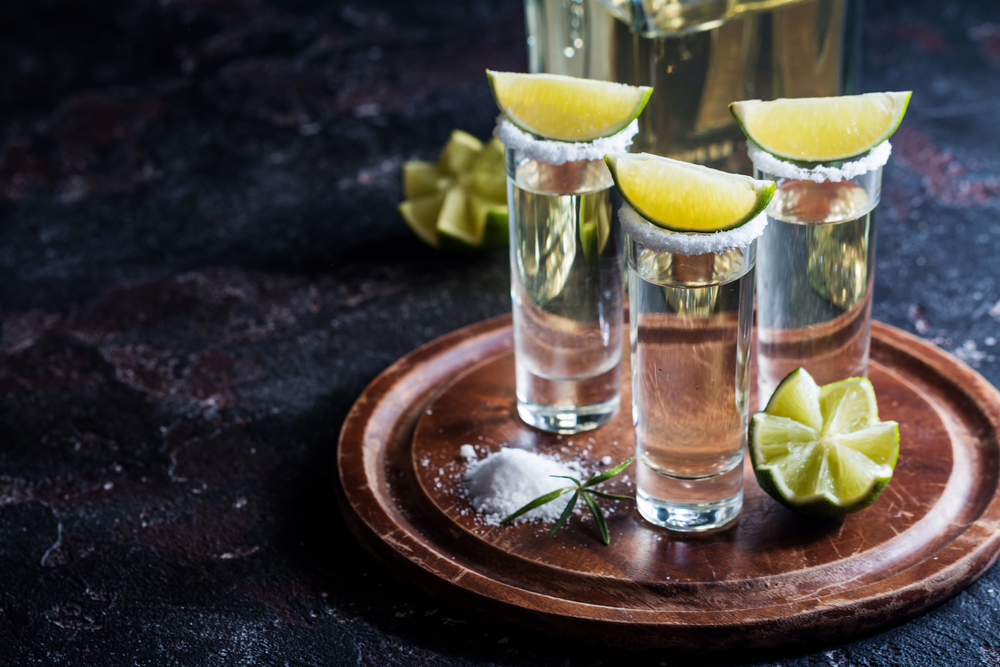
Tequila is a popular alcoholic beverage that originated in Mexico. It is made from the blue agave plant, which is native to Mexico. Tequila is a distilled spirit that is known for its unique taste and aroma. It is a versatile drink that can be enjoyed on its own or used as a base for cocktails.
Tequila has a distinctive taste that is difficult to describe. It is generally sweet, with a hint of citrus and a slightly spicy finish. The sweetness comes from the blue agave plant, which is the main ingredient in tequila. The citrus flavor is also a result of the agave, as well as the fermentation process. The spiciness can vary depending on the type of tequila and the aging process.
There are several types of tequila, including blanco, reposado, and añejo. Each type has a different taste and aroma, depending on how long it has been aged. Blanco tequila is generally the youngest and has a more aggressive flavor, while añejo tequila is aged for longer and has a smoother, more complex taste.
Types of Tequila
Tequila is a type of distilled alcoholic beverage made from the blue agave plant, primarily grown in the area surrounding the city of Tequila, 65 km (40 mi) northwest of Guadalajara, and in the Jaliscan Highlands (Los Altos de Jalisco) of the central western Mexican state of Jalisco.
There are four main types of tequila: blanco, reposado, añejo, and extra añejo. Each type has its characteristics, and the aging process is the key factor that determines the flavor, aroma, and color of the tequila.
Blanco
Blanco, also known as silver or white tequila, is not aged in oak barrels and has a clear appearance. It is bottled immediately after the distillation process, and its flavor is characterized by the natural taste of the blue agave plant. Blanco tequila is usually bottled at 38-40% alcohol by volume (ABV) and has a sharp, crisp, and herbaceous flavor with hints of citrus and pepper.
Reposado
Reposado, also known as rested tequila, is aged in oak barrels for a minimum of two months and up to one year. The aging process gives it a light golden color and a smoother taste compared to blanco tequila. Reposado tequila has a balanced flavor with notes of vanilla, caramel, and oak, along with the natural taste of the blue agave plant. It is usually bottled at 38-40% ABV.
Añejo
Añejo, also known as aged tequila, is aged in oak barrels for a minimum of one year and up to three years. The aging process gives it a darker color and a more complex taste compared to blanco and reposado tequila. Añejo tequila has a smooth and rich flavor with notes of vanilla, caramel, and oak, along with the natural taste of the blue agave plant. It is usually bottled at 38-40% ABV.
Extra Añejo
Extra añejo, also known as ultra-aged tequila, is aged in oak barrels for a minimum of three years. The aging process gives it a dark color and a rich and complex flavor profile with notes of chocolate, coffee, and dried fruit, along with the natural taste of the blue agave plant. Extra añejo tequila is usually bottled at 38-40% ABV and is the most expensive and rare type of tequila.
What are the Flavor Notes of Tequila?

Tequila has a unique flavor profile that is derived from the blue agave plant, which is the main ingredient. The taste of tequila can vary depending on the type and age of the tequila, as well as the region in which it is produced. Here are some of the general flavor notes of tequila:
- Agave flavor: Tequila has a sweet and earthy flavor that comes from the agave plant. This flavor is the most prominent in blanco (unaged) tequilas.
- Herbal and spicy notes: Tequila can have a variety of herbal and spicy notes, depending on the type and age of the tequila. Some common flavors include black pepper, cinnamon, and cloves.
- Citrus notes: Some tequilas have a citrusy flavor, which can range from lemon to grapefruit.
- Oak notes: Tequilas that are aged in oak barrels can take on some of the flavors of the wood, such as vanilla, caramel, and butterscotch.
- Smoky notes: Some tequilas are made using traditional methods that involve roasting the agave plant in underground ovens. This can give the tequila a smoky flavor.
Blanco tequila is generally the purest expression of the agave flavor, while reposado and añejo tequilas can have more complex flavor profiles due to their aging process. It’s important to note that not all tequilas will have all of these flavor notes, and some may have additional flavors that are unique to that particular brand or distillery.
Tasting Tequila

Tequila is a spirit that is enjoyed by many people around the world. Tasting tequila can be an interesting and exciting experience. In this section, we will explore the appearance, aroma, flavor, and finish of tequila.
Appearance
Tequila is a clear spirit that is usually served in a shot glass. It has a smooth texture and a bright appearance. The color of tequila can vary from clear to light amber, depending on the aging process. Blanco tequila is unaged and has a clear color, while reposado and añejo tequila are aged and have a light amber color.
Aroma
Tequila has a distinctive aroma that is often described as earthy, herbal, and slightly sweet. The aroma of tequila comes from the blue agave plant, which is the main ingredient in tequila. The aroma can also be influenced by the aging process and the type of barrel used. Reposado and añejo tequila have a more complex aroma due to their aging process.
Flavor
The flavor of tequila is complex and can vary depending on the type of tequila. Blanco tequila has a crisp, clean taste with a slight sweetness. Reposado tequila has a smoother taste with hints of vanilla and caramel, while añejo tequila has a more complex flavor with notes of oak, chocolate, and tobacco. The flavor of tequila can also be influenced by the type of agave used, the region where it was produced, and the distillation process.
Finish
The finish of tequila is the aftertaste that lingers in the mouth after the tequila has been consumed. Blanco tequila has a short finish with a slight burn, while reposado and añejo tequila have a longer finish with a smoother taste. The finish can also be influenced by the aging process and the type of barrel used.
Health Benefits and Risks of Tequila
Tequila has been touted as a drink with potential health benefits, but it is important to understand the potential risks as well. Here are some of the health benefits and risks associated with drinking tequila:
Health Benefits
- Low Sugar and Low Carb: Tequila is made from the agave plant, which contains natural sugars called agavins. These sugars are non-digestible, which means they do not raise blood sugar levels like other sugars. As a result, tequila is a low-sugar and low-carb alcoholic beverage that can be a good option for those on a low-carb diet.
- May Help with Digestion: Tequila has been traditionally used as a digestive aid in Mexico. The agave plant contains fructans, which are a type of carbohydrate that can help promote the growth of beneficial bacteria in the gut. This can help improve digestion and overall gut health.
- May Help with Sleep: Tequila is a relaxant that can help people fall asleep faster and sleep more soundly. However, it is important to note that excessive drinking can disrupt sleep patterns and lead to poor sleep quality.
Health Risks
- Alcohol Poisoning: Drinking too much tequila can lead to alcohol poisoning, which can be life-threatening. Symptoms of alcohol poisoning include confusion, vomiting, seizures, and slow or irregular breathing.
- Increased Risk of Cancer: Drinking alcohol, including tequila, has been linked to an increased risk of certain types of cancer, including breast cancer, liver cancer, and colorectal cancer.
- Liver Damage: Excessive drinking of tequila, or any alcoholic beverage, can lead to liver damage. The liver is responsible for metabolizing alcohol, and excessive drinking can cause inflammation and scarring of the liver.
Frequently Asked Questions
How does the aging process affect the taste of tequila?
The aging process of tequila can affect its taste. Tequila can be aged in oak barrels, which can give it a smoky or woody flavor. The longer the tequila is aged, the more complex its flavor profile can become. Anejo tequila, which is aged for at least one year, can have a richer, smoother taste than a blanco tequila, which is unaged.
Can tequila taste sweet?
Tequila can have a sweet taste, depending on the type and how it is made. Reposado tequila, which is aged for at least two months, can have a slightly sweet taste due to its time in oak barrels. Some tequilas also have added sweeteners, such as agave nectar or caramel, which can give them a sweeter taste.
What are some common mixers to pair with tequila?
Tequila is a versatile spirit that can be paired with a variety of mixers. Some common mixers include lime juice, grapefruit juice, pineapple juice, and soda water. Margaritas, which are made with tequila, lime juice, and triple sec, are a popular tequila-based cocktail.
What makes tequila different from other types of alcohol?
Tequila is made from the blue agave plant, which is native to Mexico. It is a type of mezcal, which is a broad category of Mexican spirits made from agave. Tequila is specifically made from blue agave, while mezcal can be made from a variety of agave plants. Tequila must also be produced in specific regions of Mexico, including Jalisco, Guanajuato, Michoacán, Nayarit, and Tamaulipas, to be considered authentic tequila.
Conclusion
Tequila is a distilled alcoholic beverage made from the blue agave plant, which is native to Mexico. It is a popular spirit that has gained worldwide recognition for its unique taste and versatility.
The taste of tequila can vary depending on the type of tequila, the aging process, and the production place. Blanco tequilas offer the purest taste of agave, while aged tequilas have a smoother taste with hints of vanilla and caramel. The taste of tequila is generally sweet, which comes from its main ingredient—the blue agave plants.
Tequila is a complex spirit that can be enjoyed in a variety of ways. It can be sipped neat, mixed in cocktails, or used as a base for margaritas. It is a versatile spirit that can be enjoyed by both casual drinkers and connoisseurs alike.
It is important to note that tequila is a strong spirit and should be consumed responsibly. It is recommended to drink tequila in moderation and to never drink and drive.
